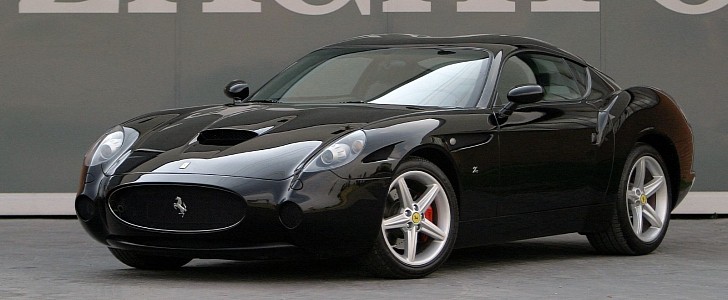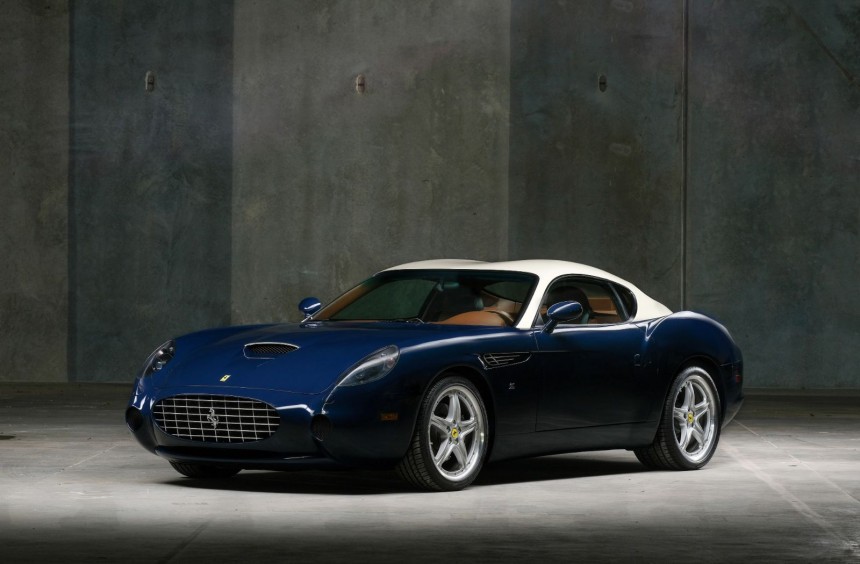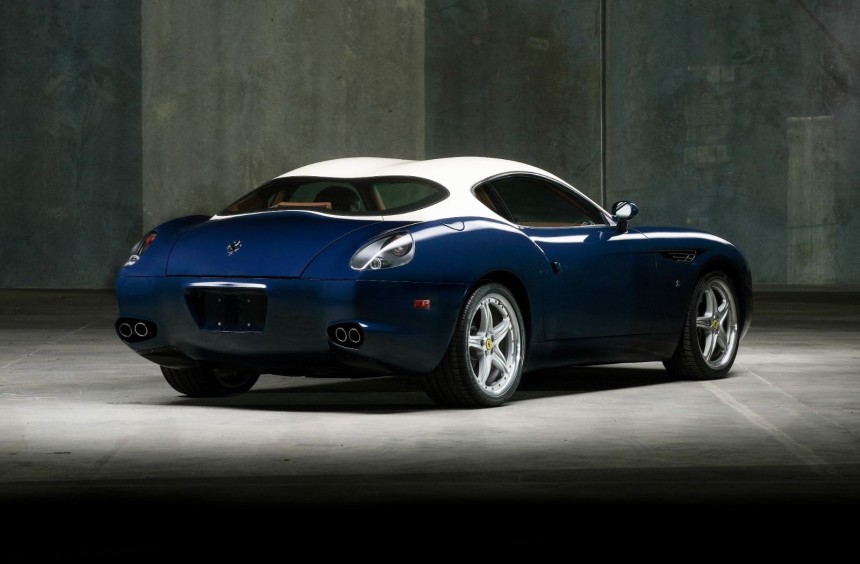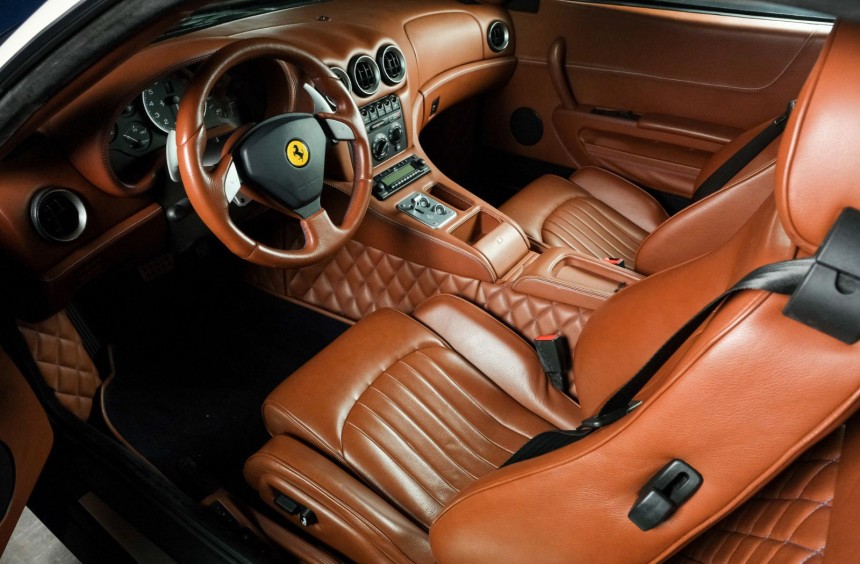What started with a collector’s unusual request back in the early 2000s, morphed into a limited series of Ferrari grand tourers that donned exquisite, handcrafted bodies conceived by legendary Milanese coachbuilder Zagato.
To understand what makes these prancing horses so special, we have to take a trip down memory lane to an era when some of the most beautiful cars of all time came into being.
In the 1950s, Ferrari was still a young company that was building an identity. During those years, its founder, Enzo, experimented with several distinct designs through partnerships with some of the best coachbuilders in Italy such as Scaglietti, Pininfarina, Bertone, or Zagato.
More focused on the racing program, il Commendatore (the Commander) needed to make money, so, even if the vast majority of his cars donned Pininfarina-designed bodies, Enzo allowed some of his clients to customize the look of their Ferraris as they saw fit. He oversaw each car’s transformation, which was handed down to one of the above-mentioned coachbuilders.
One such transformation occurred in the second half of the 1950s when two of his best clients, Vladimiro Galluzi and Camillo Luglio, requested a series of 250 GT Berlinetta "Tour de France" chassis that they wanted to equip with bespoke bodies designed by Zagato.
Ferrari obliged and sent the required chassis to Milan where Ugo Zagato, along with his sons Elio and Gianni, conceived a series of beautiful, lightweight, aerodynamically-efficient bodies that made the cars stand out on the roads and perform incredibly well on the race track.
Almost half of century later, Japanese collector Yushiyuki Hayashi decided to follow in the footsteps of Galluzi and Luglio by commissioning Zagato to re-body his Ferrari 575M grand tourer.
After an initial meeting with representatives of the Milanese design firm, a detailed sketch was put together and presented to the customer. Hayashi was pleased with the outcome, but there was a problem. In order to use the Prancing Horse badges and retain the authenticity of the vehicles, Ferrari had to be involved. The carmaker’s management was impressed with the design and deemed it perfect to commemorate the 50th anniversary of the 250 range. Thus, they agreed to authenticate Hayashi’s car on the condition four additional units would be subsequently built and sold by Ferrari to handpicked customers.
Work commenced in 2005 when Zagato received the stock 575M examples. The cars had their Pininfarina bodies, but the original structural elements and factory drivetrain were left untouched. The chassis was CAD scanned, then designers began constructing the virtual panels with constant feedback from the customers who were kept in the loop at all times.
The resulting body, which featured slight differences from chassis to chassis, was an automotive work of art. It was comprised of thin, aluminum panels hand-formed in a bouquet of seductive shapes that nodded to the custom 250 GTs of old, as well as other iconic Zagato masterpieces.
While the exterior had nothing in common with the donor car, the interior remained largely the same, albeit completely reupholstered in the finest Italian leather.
The 575 GTZ inherited the tubular steel space frame chassis of the 575M, complete with a double-wishbone suspension setup on all four corners and a Formula 1-derived braking system devised by Brembo.
Under the beautiful, vented hood, the coachbuilt Ferrari hid a naturally-aspirated V12 capable of spitting out 508 hp and 434 lb-ft (588 Nm) of torque. Displacing 5.7 liters, the all-aluminum unit featured dry-sump lubrication and 48 valves driven by dual overhead camshafts on each bank.
As the first car was nearing completion, Yushiyuki Hayashi was so thrilled with the outcome that he ordered another one. Allegedly, the first 575 GTZ which was based on a Japan-spec, right-hand-drive 575M, took on daily driving duties, whereas the second, based on a U.S.-spec model, was added to his collection.
As for the four examples that Ferrari sold to select customers, two remained in Italy, while the other two were delivered to the United States.
In the years that followed, two of these ultra-rare, bespoke prancing horses were offered at RM Sotheby’s auctions. The first, a Euro model with a two-tone gray finish was bided for in 2014, and the second, a U.S. car that you can admire in the YouTube video below by MCPhoto FL, was offered at a Monterey event in 2020. However, the owners’ demands were not met, so the cars failed to sell.
Despite wealthy enthusiasts’ reluctance to pay six-figure sums for one, the 575 GTZ remains a modern coachbuilt masterpiece and a fitting tribute to the stunning, Zagato-bodied Ferraris from the 1950s.
In the 1950s, Ferrari was still a young company that was building an identity. During those years, its founder, Enzo, experimented with several distinct designs through partnerships with some of the best coachbuilders in Italy such as Scaglietti, Pininfarina, Bertone, or Zagato.
More focused on the racing program, il Commendatore (the Commander) needed to make money, so, even if the vast majority of his cars donned Pininfarina-designed bodies, Enzo allowed some of his clients to customize the look of their Ferraris as they saw fit. He oversaw each car’s transformation, which was handed down to one of the above-mentioned coachbuilders.
One such transformation occurred in the second half of the 1950s when two of his best clients, Vladimiro Galluzi and Camillo Luglio, requested a series of 250 GT Berlinetta "Tour de France" chassis that they wanted to equip with bespoke bodies designed by Zagato.
Ferrari obliged and sent the required chassis to Milan where Ugo Zagato, along with his sons Elio and Gianni, conceived a series of beautiful, lightweight, aerodynamically-efficient bodies that made the cars stand out on the roads and perform incredibly well on the race track.
After an initial meeting with representatives of the Milanese design firm, a detailed sketch was put together and presented to the customer. Hayashi was pleased with the outcome, but there was a problem. In order to use the Prancing Horse badges and retain the authenticity of the vehicles, Ferrari had to be involved. The carmaker’s management was impressed with the design and deemed it perfect to commemorate the 50th anniversary of the 250 range. Thus, they agreed to authenticate Hayashi’s car on the condition four additional units would be subsequently built and sold by Ferrari to handpicked customers.
Work commenced in 2005 when Zagato received the stock 575M examples. The cars had their Pininfarina bodies, but the original structural elements and factory drivetrain were left untouched. The chassis was CAD scanned, then designers began constructing the virtual panels with constant feedback from the customers who were kept in the loop at all times.
While the exterior had nothing in common with the donor car, the interior remained largely the same, albeit completely reupholstered in the finest Italian leather.
The 575 GTZ inherited the tubular steel space frame chassis of the 575M, complete with a double-wishbone suspension setup on all four corners and a Formula 1-derived braking system devised by Brembo.
As the first car was nearing completion, Yushiyuki Hayashi was so thrilled with the outcome that he ordered another one. Allegedly, the first 575 GTZ which was based on a Japan-spec, right-hand-drive 575M, took on daily driving duties, whereas the second, based on a U.S.-spec model, was added to his collection.
As for the four examples that Ferrari sold to select customers, two remained in Italy, while the other two were delivered to the United States.
In the years that followed, two of these ultra-rare, bespoke prancing horses were offered at RM Sotheby’s auctions. The first, a Euro model with a two-tone gray finish was bided for in 2014, and the second, a U.S. car that you can admire in the YouTube video below by MCPhoto FL, was offered at a Monterey event in 2020. However, the owners’ demands were not met, so the cars failed to sell.
Despite wealthy enthusiasts’ reluctance to pay six-figure sums for one, the 575 GTZ remains a modern coachbuilt masterpiece and a fitting tribute to the stunning, Zagato-bodied Ferraris from the 1950s.
















